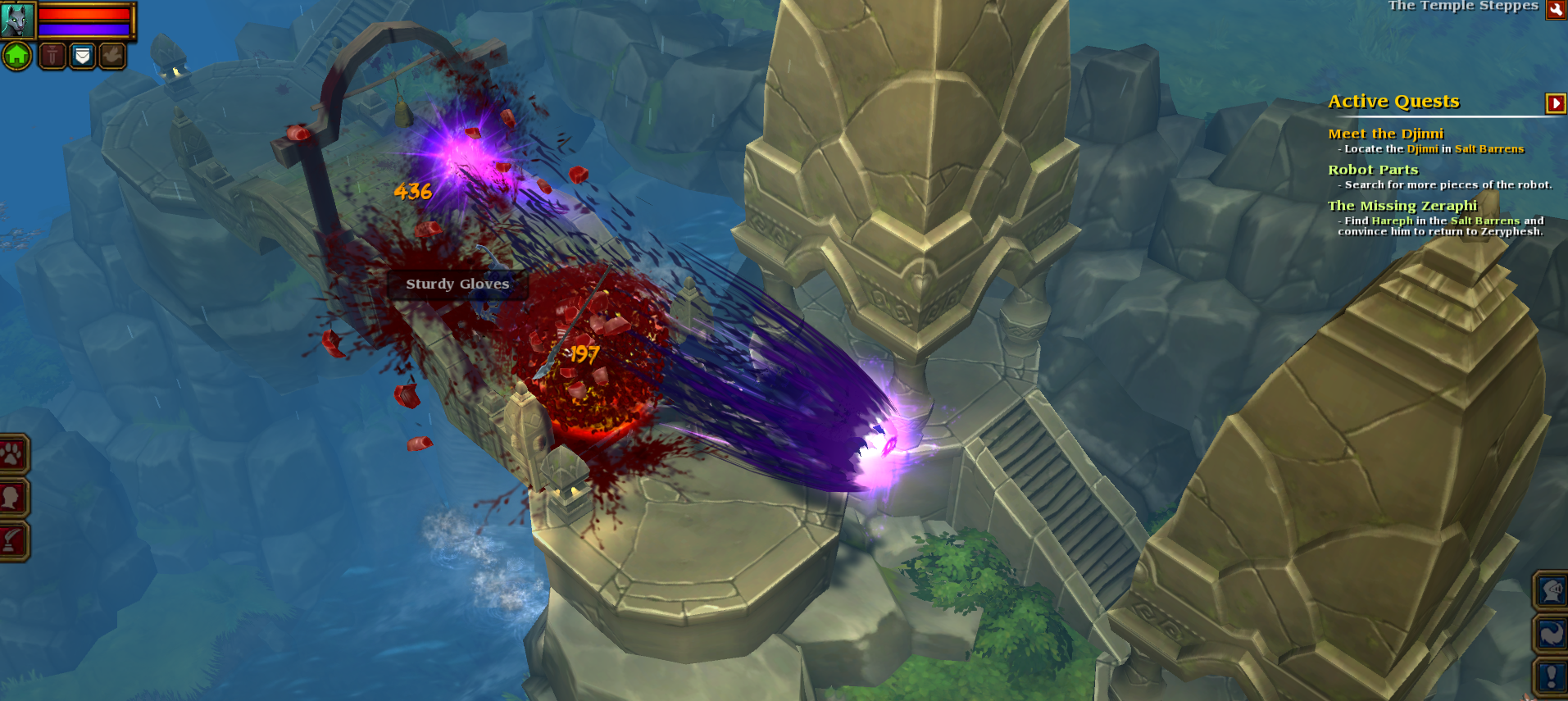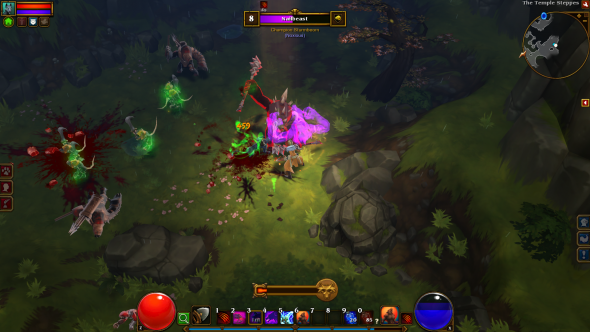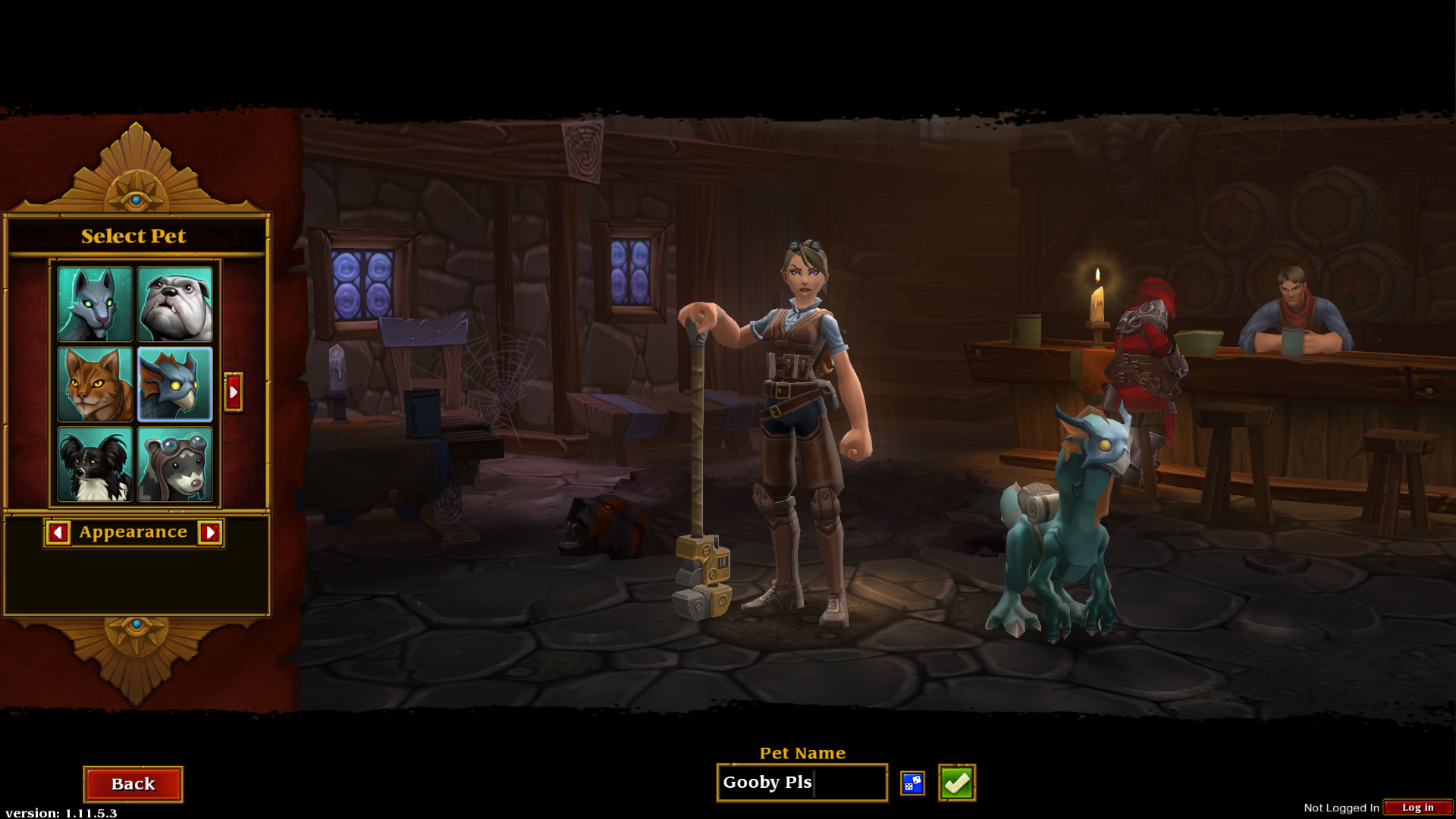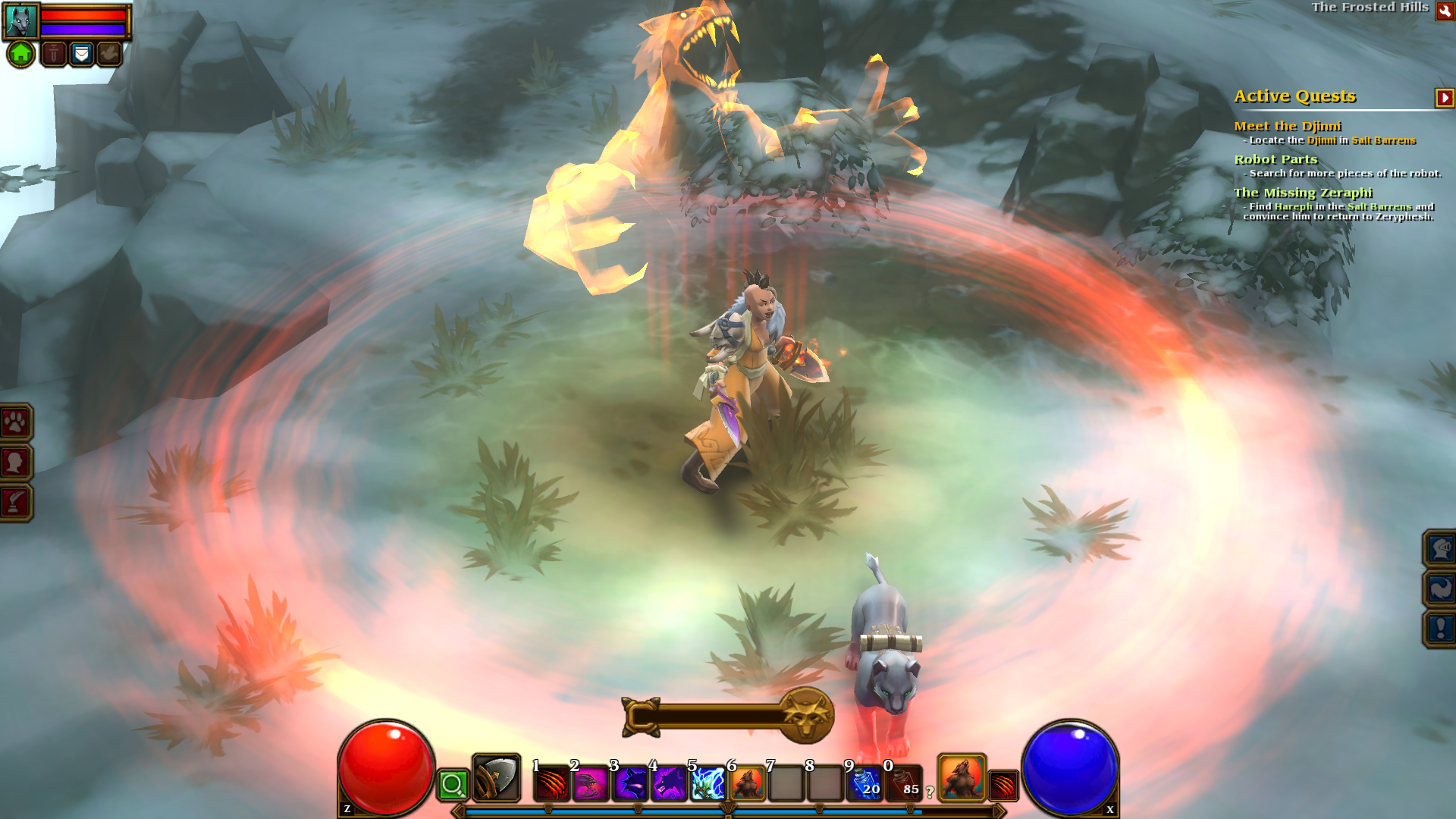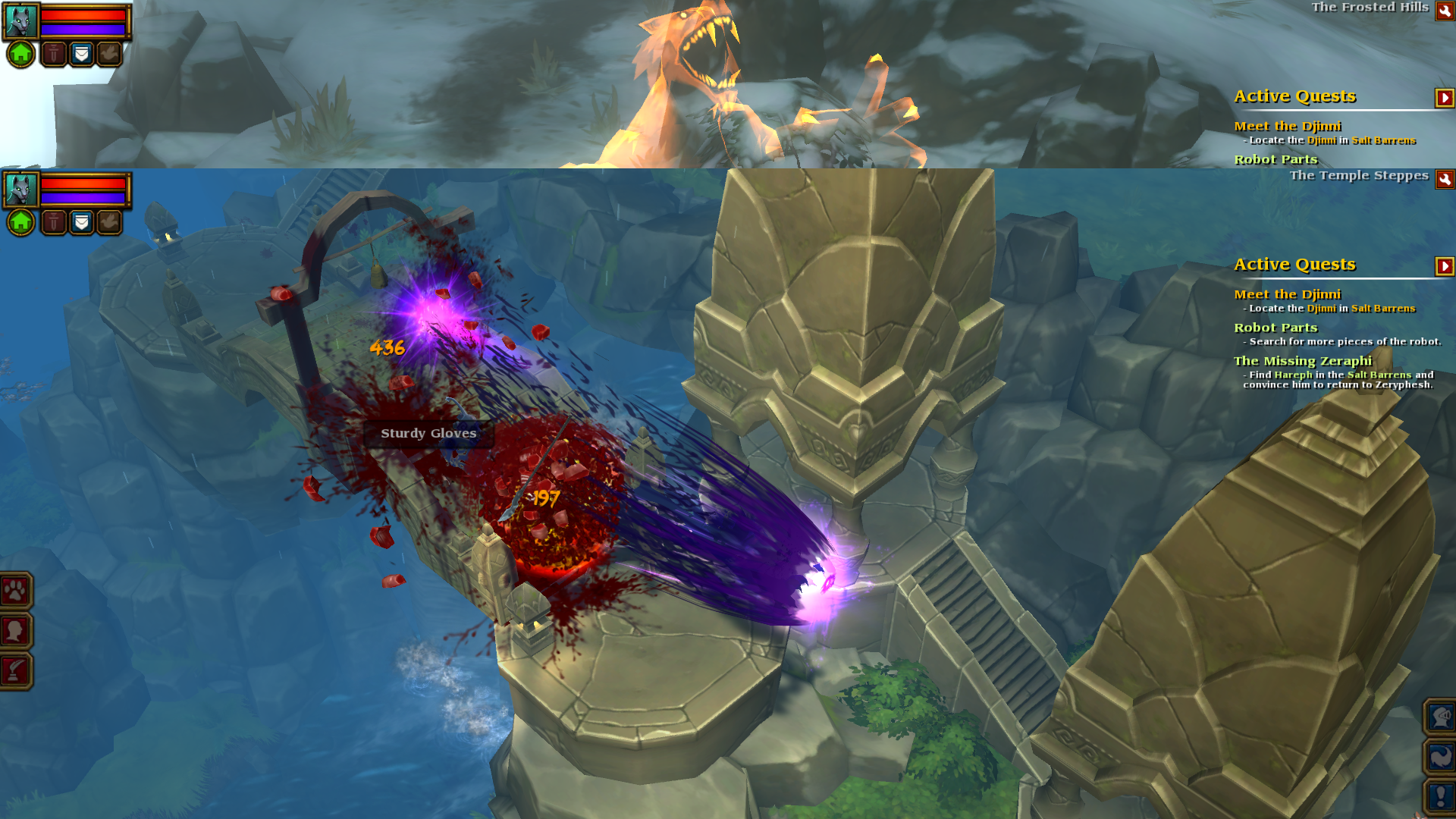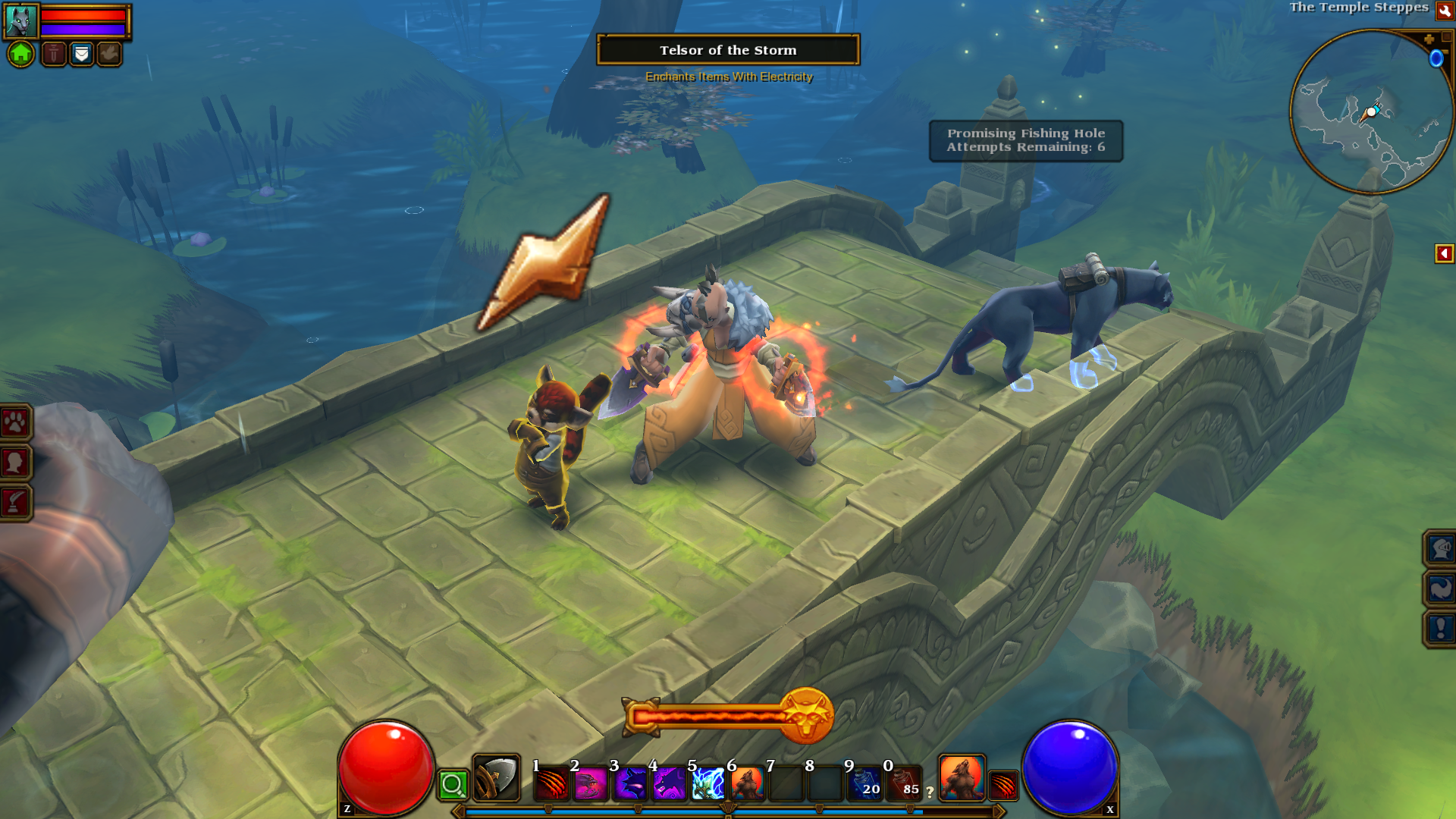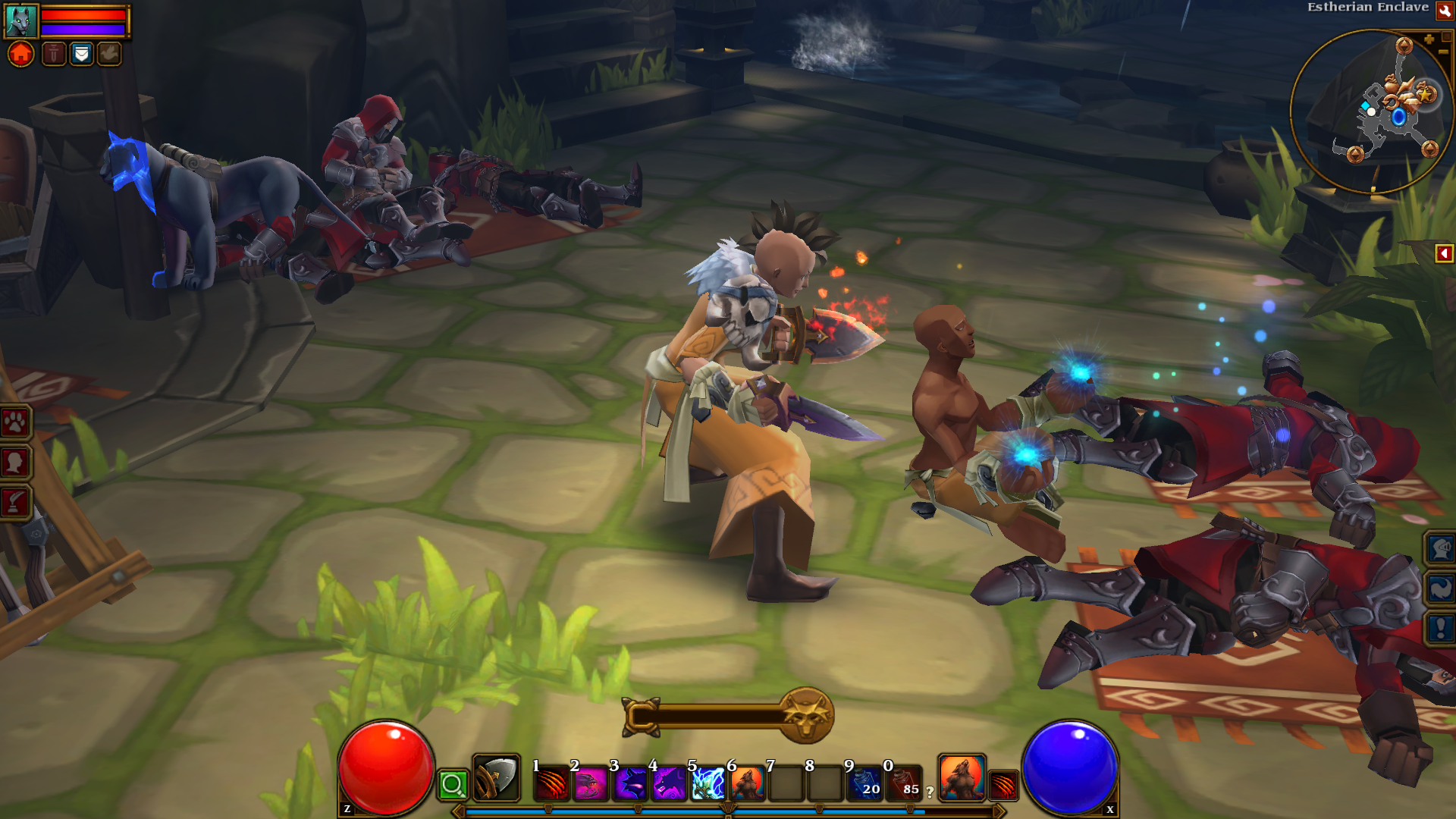Torchlight II has a lot to live up to.
The first Torchlight was an innovative take on its genre, although it was (not unfairly) often referred to by the gaming community as a “Diablo clone.” In truth, Torchlight is a replication of Diablo - a statement that is more than fair, considering that of the men working on its team is Max Schafer, co-founder of Blizzard North and fellow developer of Diablo I and II. However, given that Runic Games is a much smaller studio with an otherwise entirely different roster, it brings certain things to the table that Blizzard hasn’t.
For example, Torchlight as a series has spirit. It has a fun, vibrant visual style and an aesthetic character that has become lost in favor of realism as of late. It also lends itself well to casual gaming; if you enjoy just running around, killing things, and taking their stuff, Torchlight is the game for you. There isn’t a need to sit in your basement and linger for hours in hopes of maybe, just maybe, getting a piece of loot that will make you the Ultimate Badass.
Not to say that Torchlight is a kiddie’s playground. The storyline, while certainly PG-13, is mature beyond its genre. Players who find themselves enamored by RPG elements will have just as fun a time playing the game as the people who would rather just click through text and get to the action. However, while story was a key element in Torchlight, Torchlight II takes it to another level.
The first thing that stood out to me was how long it is. If the first Torchlight is a kitten, Torchlight II is a panther (which, conveniently, is one of the many pets your character can choose from). The game has a myriad number of new, randomly-generated dungeons that can be found nested within “standard” world maps, some of which I didn’t even discover my first time through – and I’m one of those compulsive people who has to uncover every corner of the map. Explorers are well-rewarded, too: golden chests, which contain bountiful amounts of gold and loot, are strewn about every map. Epic monsters are also tucked away in areas that some might consider “unnecessary” in relation to the plot, and we all know just what sort of goodies they drop.
To digress, let’s start at the beginning. Character creation in the original was a matter of selecting sex and class, but in Torchlight II, you get much more customization. Now, that customization isn’t on par with some of the bigger-budget RPGs and MMOs we see coming out, but for a game of this type, it’s more than adequate. You can select your sex, face, skin color, hairstyle, and hair-color, as well as – get this – one of many new companions to accompany you in your journeys. Each of the familiars you can choose has multiple colors, although the number of options you get depends on which animal you pick (for example, panther and wolf have three colors, but the Chakawary only has two).
The classes are also new. Instead of the original group, players can now choose to be an Engineer, an Outlander, a Embermage, or a Berserker. My first go around, I went to my old stand-by, the Outlander. Oddly enough, though, I wasn’t too impressed with that class; usually I tend to be hunters or rogues in games if the options are available, but it just didn’t feel right this time. So instead, I decided to do something entirely different from my personal norm.
I made an Berserker, which is essentially an enraged melee class that can pommel its enemies to death with fist weapons (as well as axes, bows, and a few others, but come on – who’s going to pass up on a chance to look like Wolverine?). Almost instantly, I was in love; this is a class that barges in and annihilates enemies, which was a refreshing change from my usual kite-and-trap tactics.
If you prefer the latter, then definitely try the Outlander or the Embermage; they’ve taken a lot from the original Torchlight, which isn’t a bad thing to say in the least. Still, it’s the same basic keep-away tactics: it’s consistent with new perks and spells, but nothing too new. The classes are all essentially reworked versions of the four available classes in the first Torchlight, but they work well enough.
As far as monsters go, the enemies have been pleasantly reworked for the sequel. Much of the UI has changed for the better, with monsters’ having different strategies depending on size, species, and class. Larger beasts are just as hulking and, generally, slow as you’d expect them to be, whereas the smaller ones tend to swarm more and move at a faster pace. The AI is smarter than the original, which makes combat more interesting. In Torchlight, I felt the combat wasn’t very challenging, but I’ve found myself six-feet-under more than a few times in Torchlight II, to give you an idea (it was still fun). Resurrection, on that note, has also changed; you can now resurrect at the town, the entrance to the dungeon you’re in, or, for a fee, right where you died.
Combat still has its downsides, though. With so many enemies swarming on the screen, older computers may have a hard time handling the lag. Reduced frame rates in a game like this can very quickly lead to death, which might frustrate some players whose internet or hardware is outdated.
Of additional frustration is the skill tree system. A respect system is in place, but it only allows you to respect the last three points you’ve spent and, on top of that, you must be in a town to do so. If you don’t look long and hard at the skills early on, you might end up making some pretty critical mistakes that will hurt you in the long term.
Moving on, the animations for everything are fluid and natural. Every monster has a different gait, and each class has a certain demeanor about it that makes it stand out from the others. It makes the game as a whole feel more organic.
The environments, too, are nothing to scoff at. Every monster lives in an accompanying niche, be it the scorching sands of the desert, moist swamp grounds, or dwarven fortresses built deep beneath the earth. Monsters approach you from every direction, each one logical to their type; for example, insects swarm from their nests, while rodent-like beasts skitter up from the darkness of their dens.
Multiplayer is alright. I had much more fun running around in my own world than playing with others, since the multiplayer function has a tendency to be clunky. You go into a lobby to wait for other players to arrive, but the game does not automatically match you up based on quest or level, making it difficult to coordinate what you do together. I'd recommend using the multiplayer primarily at LAN parties or with friends that you can talk to over IM.
Transmutation was sort of an afterthought for most players in the first Torchlight, but in Torchlight II, it's become more of a big deal. Not only can you transmute and enchant your items in town, but you can also run into NPCs out in the wild who will buff your items with extra-tasty goodies that will really help a lot when you're plowing through dungeons.
Sound and graphics are fair for a game of this type. Keeping in mind that Torchlight is a flavorful, cartoony series, its aesthetics are very pleasing to the eye, particularly if you’re able to turn the graphics all the way up. The specular effects look great, especially while you’re flinging spells at hoards of monsters. There isn’t anything particularly mind-blowing in sound; it fits well with the game and nothing seems out of place, but it doesn’t have a soundtrack I’d actively seek to buy.
Overall, Torchlight II is a great successor. It takes the good from the first Torchlight and makes it better, all while adding new customization features and tons more areas to explore. You won’t be disappointed for lack of content – although the first few levels are routine, as soon as you get out into the open maps, the world becomes your oyster.
It’s an excellent series that stands up well to accusations of it simply being a Diablo clone, as is proved especially in the sequel. Part of this is due to its lacking of a commercial feeling; on top of being riddled with bugs upon its release, Diablo III had a sense of capitalism with its Auction House, which I felt detracted from the game’s original appeal. In contrast, I have yet to uncover any bugs in Torchlight II, and there definitely isn’t a real-life money sink anywhere to be found. No game is perfect, but Torchlight II is a highly entertaining game that is guaranteed to give you hours of fun.
That, and shinies.

